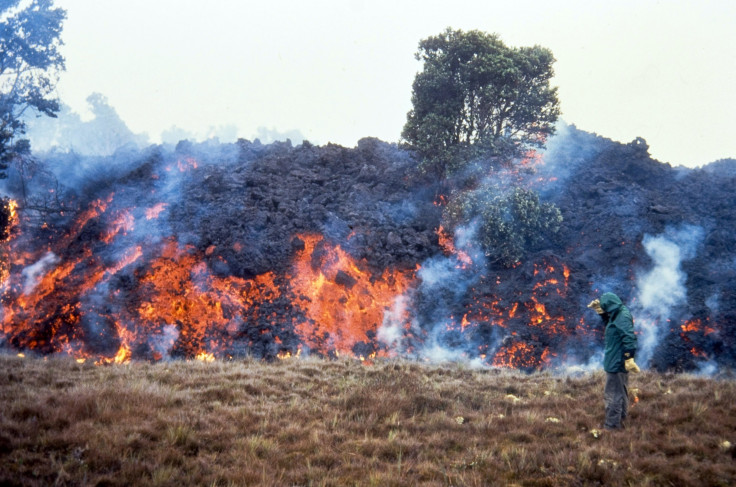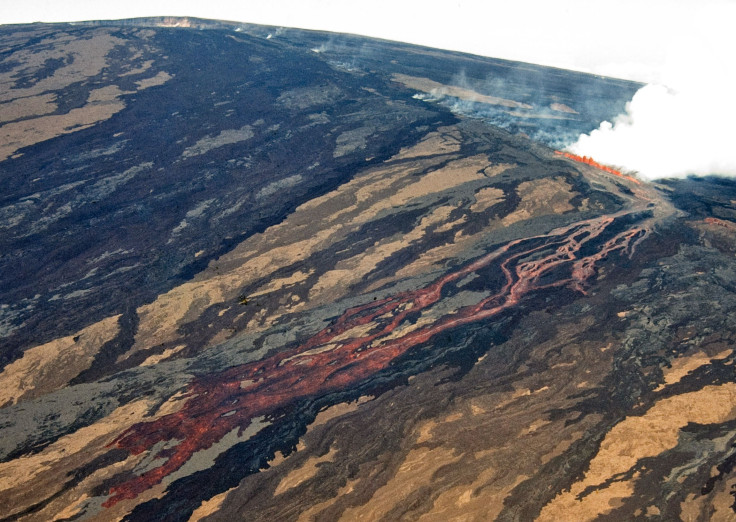Mauna Loa: Scientists Watching Hawaii's Largest Volcano For Possible Eruption

Experts from the U.S. Geological Survey are keeping their eyes on Hawaii’s biggest volcano in case it shows signs that it is about to erupt.
In recent years, scientists have reported that magma is slowly filling chambers beneath Mauna Loa, the largest volcano in Hawaii, and there have been small earthquakes at the site, “reflecting stresses that built as the volcano became pressurized,” the USGS wrote on its Volcano Watch blog. The activity came after years without any magma building up in the gaps, and the amount of energy released during each of the earthquakes is similar to what scientists saw before Mauna Loa erupted in 1975 and in 1984.
During the last explosion in 1984, some of the lava that poured out of the volcano and gushed outward got to be 13 feet high and moved more than 150 feet an hour. The eruption lasted for 22 days.
But whether it will actually erupt today remains a mystery.
On the USGS alert system for volcanic activity, for the last two years Mauna Loa has been raised from a normal, non-eruptive level to an “advisory” level, in which the volcano “is exhibiting signs of elevated unrest above [the] known background level.” The two higher alert levels in that system are “watch,” in which there is “heightened or escalating unrest with increased potential of eruption,” and “warning,” in which a “hazardous eruption is imminent, underway or suspected.”
Also since September 2015, Mauna Loa has been at a yellow aviation alert level, part of the system that warns groups in aviation about the potential for hazardous ash conditions in the air. The yellow alert is one rung on the scale higher than green, given to volcanoes without any activity. Volcanoes that are more active than Mauna Loa could be labeled orange, when there is “heightened or escalating unrest with increased potential of eruption,” or red when an “eruption is imminent with significant emission of volcanic ash into the atmosphere likely.”
Since the alert levels went up “rates of inflation and seismicity have waxed and waned, but have remained above what we consider to be long-term background levels,” the USGS said. “In addition, we have detected more small magnitude earthquakes beneath Mauna Loa than at any time since the previous eruption in 1984.”
Mauna Loa is not the only volcano around the world that scientists are keeping watch over for a potential eruption. For example, experts have been trying to predict the future behavior of Campi Flegrei, a supervolcano just west of Naples, Italy, that earned this title by having a previous eruption that reached the highest magnitude on the Volcano Explosivity Index, a magnitude 8. At that volcano, which last erupted in 1538, there are little earthquakes, the ground is uplifting and magma is filling the empty chambers beneath the Earth’s crust in the area surrounding the volcano — all conditions of volcanic unrest that could lead to an explosion.

Campi Flegrei is just a few miles away from the infamous Mount Vesuvius that erupted almost 2,000 years ago and destroyed the ancient Roman city Pompeii.
The USGS isn’t warning of an imminent eruption at Mauna Loa quite yet.
“If Mauna Loa follows the ‘script’ of 1975 and 1984, before the volcano ramps up to an eruption, we would expect to see lots of small earthquakes occurring frequently beneath the summit — many more than are currently recorded — over a period of months,” according to the blog post. “We would also expect at least an hour, or hours, of tremor (constant ground vibration) as a final warning that magma is on its way to the surface.”
The volcano may also behave unpredictably, following a pattern unlike the previous two eruptions before it blows again. To cover all their bases, the experts are closely monitoring this volcano and the USGS is working with other authorities to keep the public safe in the event that molten rock comes streaming out of the volcano.
“We must continue to live with uncertainty about the timing and details of Mauna Loa’s next eruption," the post added.
© Copyright IBTimes 2024. All rights reserved.




















